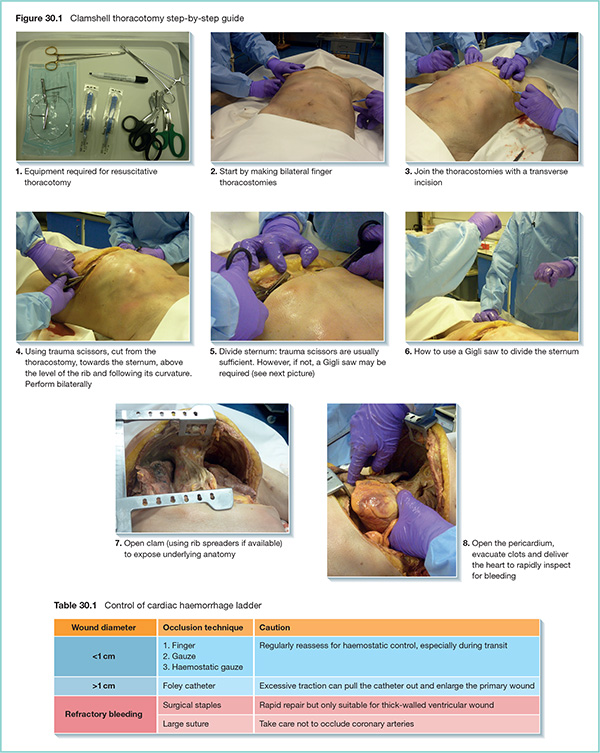30 Pre-hospital resuscitative thoracotomy was once seen by some as an ‘heroic’ intervention with a very poor outcome. However, emerging evidence has identified a specific subgroup of patients whose survival rates, with good neurological outcomes, approach 60%, if the thoracotomy is performed promptly and by the right team. Based on the above, patients must meet each of the following strict consensus criteria for progression to pre-hospital resuscitative thoracotomy (RT): Currently, any other indication for pre-hospital RT is insufficiently supported by evidence and therefore difficult to justify; however, there is increasing support for RT in proximal haemorrhage control following penetrating abdominal injury. Absolute contraindications are based on futility of RT: Blunt trauma, severe head injury and damage to more than one body region are associated with very poor outcomes and also currently preclude RT. It should also be noted, however, that in practice, it is often difficult to establish precise time of loss of output and as such RT is often carried out when downtime is unclear.
Resuscitative thoracotomy

Indications
Contraindications
Stay updated, free articles. Join our Telegram channel

Full access? Get Clinical Tree








